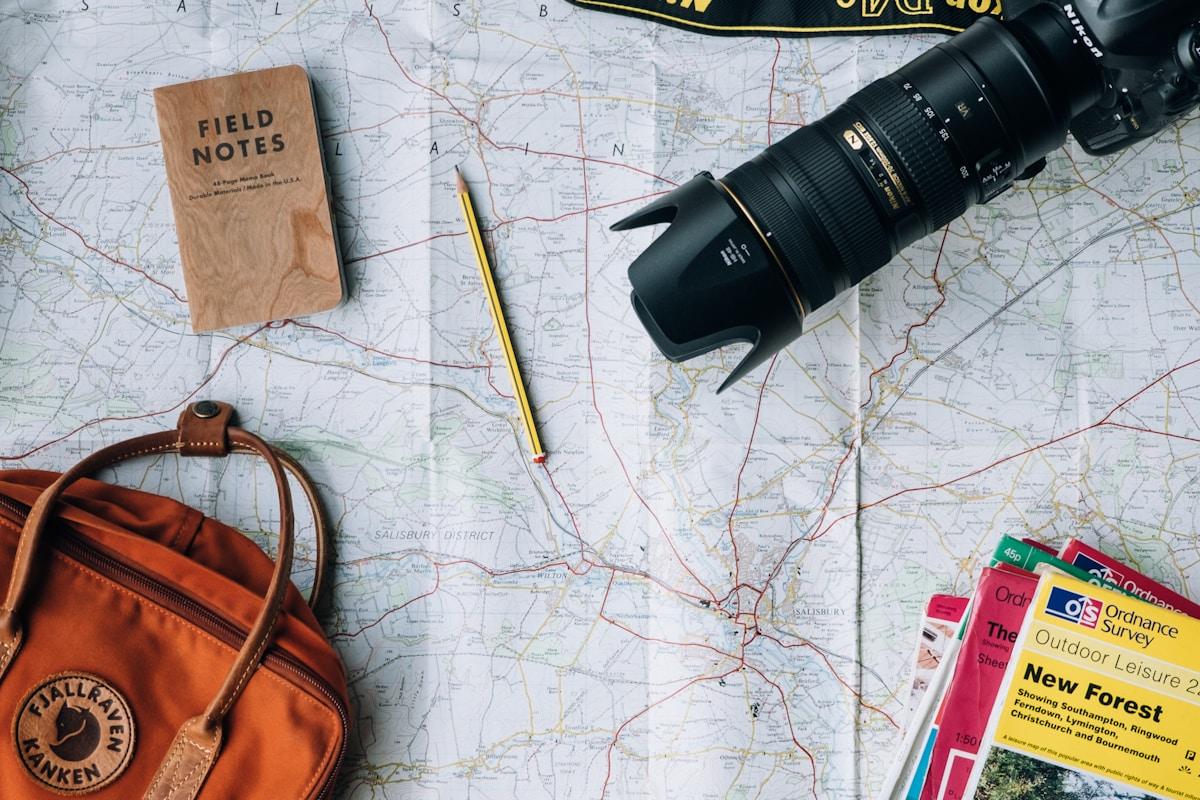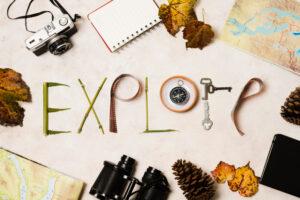Solo Travel Safety: Essential Tips for Independent Adventurers
There’s something incredibly liberating about traveling alone. You set your own pace, follow your own interests, and answer to no one but yourself. But let’s be honest—the thought of venturing out into the world solo can be intimidating, especially when it comes to safety. I get it. The concerns are real, and they’re valid.
Here’s the thing though: solo travel doesn’t have to be scary. With the right preparation and mindset, it can be one of the most rewarding experiences of your life. I’ve spent years talking to solo travelers, reading their stories, and learning from their experiences. What I’ve discovered is that most safety issues can be prevented with some common sense and a bit of planning.
So let’s talk about how to travel solo safely without letting fear hold you back from incredible adventures.
#
The Reality of Solo Travel Safety in 2025
First, let’s address the elephant in the room. Yes, there are risks when you travel alone. But here’s what the data actually shows: 65% of solo travelers feel safe in most places they visit, even though 33% have experienced some form of crime abroad. That might sound contradictory, but it makes sense when you think about it. Most incidents are minor—pickpocketing, overcharging, small scams—not the dramatic scenarios we imagine.
The solo travel market is booming, with a projected 9.1% growth rate through 2030. More people than ever are choosing to explore the world independently, and they’re doing it successfully. In fact, 59% of travelers are planning solo trips, which tells you something important: people are figuring out how to do this safely.
But safety concerns do influence where people go. About 45% of travelers say crime levels heavily impact their destination choices. Countries like Japan, Portugal, Iceland, and New Zealand top the “safe destination” lists, while places like Mexico, Egypt, and Turkey often get avoided due to concerns about crime, political instability, or inadequate legal protections for tourists.
The interesting part? Experience matters tremendously. First-time solo travelers often feel anxious, but that drops to just 52% for experienced solo adventurers. Once you’ve done it a few times, you realize that most of your fears were overblown, and you develop instincts that keep you safe.
#
Before You Go: Preparation Is Everything
I can’t stress this enough—the work you do before your trip matters more than anything else. This isn’t about being paranoid; it’s about being prepared.
Start by really researching your destination. I’m not talking about just reading travel blogs (though those help). Check government travel advisories from sources like the U.S. State Department or the UK’s Foreign Office. These sites provide up-to-date information on everything from crime rates to health risks to political instability. They’re not trying to scare you—they’re giving you facts so you can make informed decisions.
Enroll in programs like the Smart Traveler Enrollment Program (STEP) if you’re American, or similar services from your home country. These programs keep you updated on safety conditions and make it easier for your embassy to reach you in an emergency. It’s free, takes five minutes, and could be invaluable if something goes wrong.
Now, let’s talk about the practical stuff. Create a digital folder with copies of all your important documents—passport, visa, travel insurance, emergency contacts, credit cards. Store it in the cloud where you can access it from anywhere. Email a copy to yourself and share it with someone you trust back home. If your wallet gets stolen or your bag goes missing, you’ll be grateful you did this.
Speaking of travel insurance, get it. Seriously. I know it seems like an unnecessary expense, but one medical emergency or trip cancellation can cost you thousands. Look for policies that specifically cover solo travel scenarios, including medical evacuations and trip interruptions. Companies like World Nomads are popular among solo travelers for good reason—they understand the unique risks.
When choosing accommodations, think about security features. Look for places with 24-hour reception, keycard access, and good reviews from other solo travelers. Request a room on an upper floor (harder for someone to break in through a window) but not so high that you can’t escape in an emergency. Some travelers carry a doorstop or portable door lock for extra security—it sounds paranoid, but it’s a simple precaution that costs almost nothing.
#
On the Road: Staying Safe Day to Day
Once you’re actually traveling, situational awareness becomes your best friend. This doesn’t mean walking around in constant fear—it means staying present and paying attention to your surroundings.
Here’s what 93% of successful solo travelers do: they stay alert. That means not walking around with both earbuds in, not staring at your phone while navigating crowded streets, and not looking obviously lost or confused. Plan your routes in advance using offline maps. If you need to check directions, step into a café or shop rather than standing on a street corner looking vulnerable.
Trust your instincts. If something feels off, it probably is. That sketchy alley shortcut? Take the longer, well-lit route. That overly friendly stranger who’s being a bit too helpful? Politely decline and move on. Your gut has evolved over millions of years to keep you safe—listen to it.
Blend in as much as possible. This doesn’t mean you need to dress exactly like locals, but avoid screaming “tourist.” Leave the expensive jewelry at home. Don’t flash large amounts of cash. Dress appropriately for the culture—78% of solo travelers adapt their clothing to local norms, and it’s not just about respect; it’s about not drawing unwanted attention.
When it comes to your valuables, be smart. Use a crossbody bag that you can keep in front of you in crowds. Divide your cash and cards across multiple secure locations—some in your bag, some in a money belt, some in your hotel safe. If someone does try to rob you, you won’t lose everything at once.
Transportation deserves special attention. Use reputable ride-sharing apps rather than random taxis. If you’re taking public transit, sit near the driver or in well-populated areas. At night, stick to well-lit, busy streets, and consider splurging on a taxi rather than walking alone. About 68% of solo travelers opt for trusted transport services, especially after dark, and there’s a reason for that.
#
The Technology That Keeps You Safe
We live in an amazing time for solo travelers because technology has made staying safe so much easier. Your smartphone isn’t just for taking photos—it’s a powerful safety tool.
Start with the basics. Make sure your phone is set up with emergency contacts that can be accessed from the lock screen. Both iPhones and Android devices have ICE (In Case of Emergency) features that let first responders see your medical information and emergency contacts even if your phone is locked.
Download offline maps before you travel. Google Maps lets you save entire cities for offline use, which means you can navigate even without data or WiFi. Apps like Maps.me are specifically designed for offline navigation and are incredibly detailed.
Consider safety apps designed for travelers. Apps like EchoSOS can contact emergency services worldwide, while Signal provides secure, encrypted messaging if you need to share sensitive information. Some travelers use apps like FoneTrac that include panic alerts, check-ins, and threat monitoring. Others prefer wearable devices like ResQ Jewelry that have integrated panic buttons.
For women traveling alone, apps like NomadHer create communities where you can connect with other female travelers, share safety tips, and even meet up in person. It’s like having a built-in support network wherever you go.
Don’t forget about VPNs. Public WiFi is convenient but dangerous—hackers can easily intercept your data. A VPN encrypts your connection, protecting your passwords, credit card information, and personal data. It’s a small investment that can prevent major headaches.
Translation apps like Google Translate are essential, not just for ordering food but for emergencies. Being able to communicate “I need help” or “Where is the hospital?” in the local language could be crucial. Download the offline language packs before you travel.
#
Dealing with Loneliness and Social Safety
Let’s talk about something people don’t always mention: solo travel can be lonely, and loneliness can lead to poor safety decisions. When you’re feeling isolated, you might be more likely to trust the wrong person or put yourself in risky situations just to have company.
The good news is that combating loneliness doesn’t mean compromising your safety. Stay in hostels if you want to meet other travelers—they’re designed for social interaction and usually have good security. Join walking tours or cooking classes where you’ll naturally meet people in safe, structured environments. Use apps like Meetup to find local events or groups that match your interests.
But also embrace the solitude sometimes. Bring a book to dinner, journal in a café, people-watch in a park. Some of the best moments of solo travel happen when you’re alone with your thoughts, fully present in a new place.
If you do meet people you want to spend time with, be smart about it. Meet in public places first. Tell someone where you’re going. Trust your instincts—if someone is pushing too hard to get you alone or making you uncomfortable, it’s okay to be rude and walk away.
#
Special Considerations for Different Travelers
Safety concerns vary depending on who you are. Women face different risks than men, and it’s important to acknowledge that. About 65% of women cite personal safety as a major barrier to solo travel, compared to much lower percentages for men. Women are more likely to experience harassment and need to take additional precautions.
That said, millions of women travel solo successfully every year. The key is being aware of the specific risks and taking appropriate measures. Some women wear fake wedding rings to deter unwanted attention. Others dress more conservatively in certain cultures. Many avoid walking alone at night and are extra cautious about alcohol consumption.
LGBTQ+ travelers need to research local attitudes and laws before visiting certain countries. What’s perfectly normal at home might be illegal or dangerous elsewhere. Resources like the International Lesbian, Gay, Bisexual, Trans and Intersex Association (ILGA) provide country-by-country information on laws and attitudes.
Travelers with disabilities should research accessibility in advance and consider destinations with good infrastructure. Many countries are improving, but accessibility varies widely, and you don’t want to arrive somewhere only to find you can’t navigate it safely.
#
The Safest Destinations for Solo Travelers
If you’re new to solo travel, starting with a “safer” destination can build your confidence. Based on multiple safety indices and traveler surveys, some of the best places for solo travelers include:
Iceland consistently ranks as one of the safest countries in the world, with extremely low crime rates and a culture that’s welcoming to solo travelers. The infrastructure is excellent, English is widely spoken, and the natural beauty is stunning.
Japan is another favorite, known for its low crime rates, efficient public transportation, and helpful locals. The culture values respect and safety, making it ideal for first-time solo travelers.
Portugal offers a perfect blend of safety, affordability, and charm. Lisbon and Porto are particularly popular with solo travelers, offering vibrant cultures, great food, and friendly locals.
New Zealand is perfect for adventure travelers who want to feel safe while exploring the outdoors. The country has excellent infrastructure, low crime rates, and a culture that embraces independent travelers.
Denmark and other Scandinavian countries consistently rank high for safety, gender equality, and quality of life. They’re more expensive, but the peace of mind is worth it for many travelers.
On the flip side, some destinations require extra caution. This doesn’t mean you shouldn’t go—many people travel safely to these places—but you need to be more vigilant. Research specific neighborhoods, avoid certain areas at night, and consider hiring local guides for added security.
#
When Things Go Wrong
Despite your best efforts, sometimes things go wrong. Knowing how to handle emergencies is crucial.
If you’re the victim of a crime, report it to local police immediately. You’ll need a police report for insurance claims. Then contact your embassy or consulate—they can help with lost passports, provide lists of local lawyers, and offer support.
For medical emergencies, know the local emergency number (it’s not always 911). Your travel insurance should have a 24-hour emergency line—save that number in your phone before you leave. Many insurance companies can help arrange medical care and even medical evacuation if necessary.
If you lose your passport, contact your embassy immediately. They can issue emergency travel documents. This is why having digital copies of your documents is so important—it speeds up the replacement process significantly.
For less serious issues like getting lost or missing a connection, stay calm. Most problems have solutions. Ask for help from hotel staff, tourist information centers, or other travelers. The solo travel community is generally supportive and willing to help.
#
The Bottom Line
Solo travel isn’t risk-free, but neither is staying home. The key is managing risks intelligently rather than letting fear control your decisions.
The statistics show that most solo travelers have positive, safe experiences. The ones who run into trouble are often those who didn’t prepare adequately or ignored warning signs. By doing your homework, staying aware, using technology wisely, and trusting your instincts, you can minimize risks significantly.
Remember that confidence is a safety tool. When you look like you know what you’re doing, you’re less likely to be targeted. And that confidence comes from preparation and experience. Your first solo trip might feel scary, but by your third or fourth, you’ll wonder what you were so worried about.
The world is full of incredible places and experiences waiting for you. Don’t let fear keep you from discovering them. With the right preparation and mindset, solo travel can be not just safe, but transformative. It teaches you self-reliance, builds confidence, and gives you stories you’ll tell for the rest of your life.
So start planning that trip. Research your destination, pack smart, stay aware, and trust yourself. The adventure of a lifetime is waiting, and you’re more capable of handling it than you think.
Safe travels, adventurer. The world is yours to explore.




